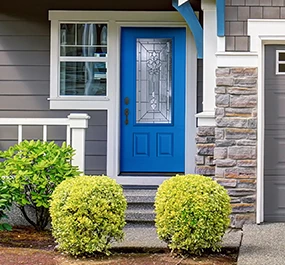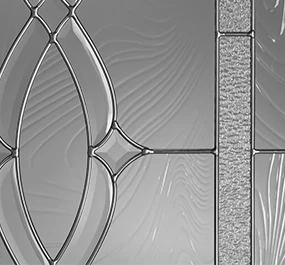When choosing an exterior door, there are many factors to consider. One of the most important is the amount of direct sunlight the door will be exposed to. Too much sunlight can cause the door to fade and warp over time, so it's important to select a door that can handle these conditions.
In this post, we will discuss what should be considered when choosing an exterior door for direct sunlight.
How to Choose the Best Exterior Door for Direct Sunlight
There are a variety of factors that will affect how an exterior door performs when exposed to direct sunlight. Let’s take a look at a few.
Door Material
Arguably the most important consideration when choosing the best exterior door for direct sunlight is the door material. Different door materials will respond differently to direct sunlight, so it is important to choose a material that can hold up.
For example, while wood doors may look great, they are particularly susceptible to sun damage. The heat and light can cause the wood to warp, crack, and fade over time. If your door will be exposed to a lot of direct sunlight, this can lead to more required maintenance—or needing to replace the door altogether.
Steel doors are a more durable option, and they are less likely to be damaged by sunlight than wood. However, they absorb heat and can become hot to the touch in direct sunlight. This can create a potentially harmful situation while using the door.
Fiberglass doors are the top choice for handling direct sunlight. Fiberglass doors are durable and far less likely to be damaged by the sun than wood, while being relatively cooler to the touch than steel. Plus, fiberglass doors also offer woodgrain options that allow homeowners to get the aesthetic benefits of wood with the functional benefits of fiberglass.
Door Glass
Glass can add beauty and style to a door—and of course, it provides the benefits of natural light to the home. That being said, for doors that receive a lot of direct sunlight, glass isn’t always the best choice. Specifically, full-glass front doors aren’t typically advised over a solid option such as fiberglass. This is because sunlight coming through can result in fading or damage to furniture or other belongings inside the home, due to the sun’s UV rays.
For those looking at exterior doors with glass, all is not lost when it comes to direct sunlight. Low-E glass features a specialized coating that helps block UV rays from entering through the glass. Therefore, in addition to its energy efficiency benefits, Low-E glass can provide protection for personal belongings in the home. If your door receives a lot of direct sunlight, it may be worth upgrading to Low-E door glass.
Door Color
Certain door colors will also affect an exterior door’s performance in handling direct sunlight. While dark colors may offer enhanced front door curb appeal, they also absorb heat. This can cause the door to be warmer to the touch and may result in fading or damage more quickly.
Choosing a lighter color for the door can help keep the door from absorbing too much sunlight, helping to keep it cooler and prevent the effects of the sun from happening as quickly. A white door will perform well, but lighter shades of color can work similarly—plus, the sunlight can help these colors pop.
Door Paint
Door color often goes hand-in-hand with door paint, and choosing the best exterior door paint to handle the sun is a must. If you’re opting to paint the door a new color, look for a paint color with a high light reflectance value (LRV). This is a number on a 0-100 scale that tells how much light the color will reflect—therefore, a higher number means less sunlight absorption and less risk for fading and damage.
Additionally, regardless of the color you choose, always look for paints labeled as fade- or UV-resistant. While no paint is completely fade-proof, these paint types are specially designed to resist the effects of direct sunlight, allowing the door to retain its color for longer.
Fight the Sunlight with Plastpro Fiberglass Doors
By taking these factors into consideration, you can keep your exterior door in top condition even when exposed to direct sunlight.
As mentioned, it all starts with the door itself. If you have a south-facing exterior door or don’t have additional protection such as an awning, it’s especially important to choose the right door material to fight against the extra direct sunlight. This is one area where fiberglass doors excel and perform better than other door materials.
Plastpro’s lineup of fiberglass exterior doors stands not only against sunlight, but also against other environmental factors like severe weather, ensuring your door performs against all the elements thrown its way. Each Plastpro door comes equipped with a proprietary, high-density polyurethane core that aids with durability, energy efficiency, and door security—helping to make your next fiberglass door your last.
To find the right fiberglass door for your home, visit our Where to Buy page to learn where to get a Plastpro door near you.



